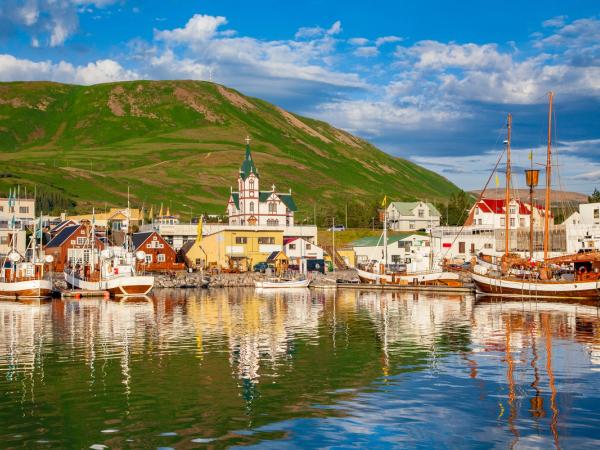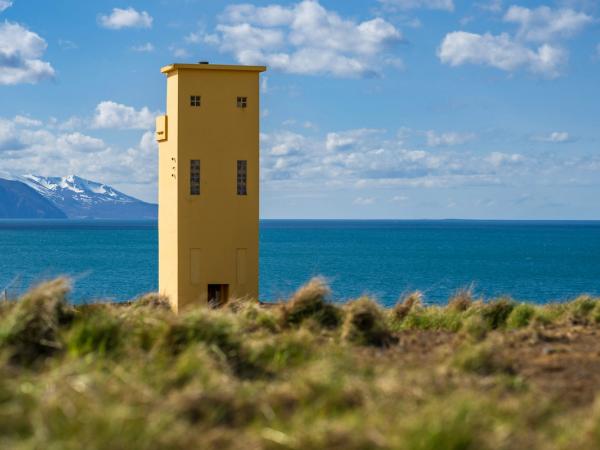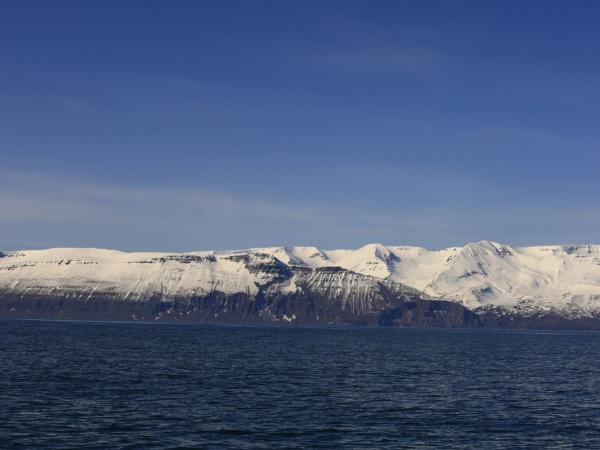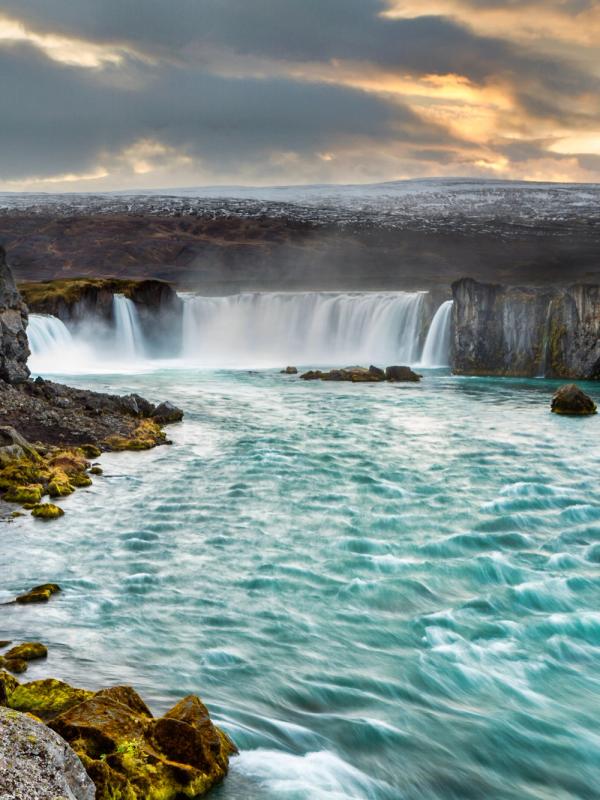
The Diamond Circle in North Iceland: A Self-Drive Itinerary
Embark on a captivating self-drive adventure through the stunning landscapes of North Iceland with our detailed itinerary guide, "The Diamond Circle: A Self-Drive Itinerary." To elevate your exploration, consider the convenience and flexibility of Iceland campervan travel. A campervan not only serves as your mobile home but also allows you to seamlessly navigate the highlights of the Diamond Circle, from the majestic Godafoss waterfall to the volcanic wonders of Lake Myvatn. With the freedom to set your own pace, a campervan enhances your experience, ensuring that each stop along this iconic route is met with comfort and ease.
The Diamond Circle is one of Iceland’s driving routes located in the northeast of the country. Although it’s been around for a while, the route only officially opened in August of 2020. The circle contains some of Iceland’s biggest-hitting sights, including those inside Jökulsárgljúfur, those around Lake Mývatn, and Húsavík, the whale-watching capital of Iceland. There’s so much to see and do here, you’ll need to set aside at least 2 days to do it. Here’s how to discover the Diamond Circle in a campervan.
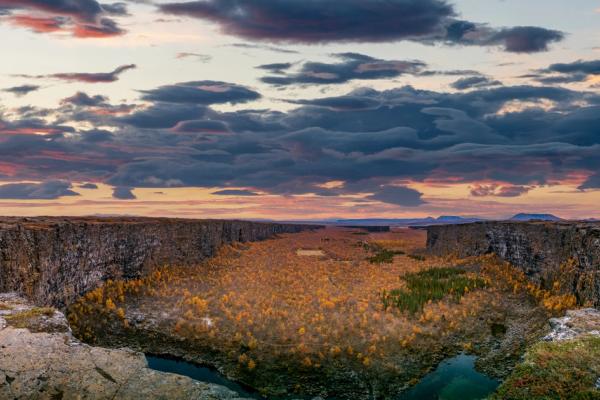
The Best Time to Drive the Diamond Circle
For campervans, the best time to drive the Diamond Circle is in summer. Autumn and Spring are also options, although bouts of snow can make route 862 difficult to access. At the very least, you should be able to access Dettifoss from the south and Ásbyrgi from the north.
Also in winter, the road to Dettifoss should also be open unless there has been some particularly bad weather.
Day 1
Húsavík: The Capital of Whale Watching in Iceland
We’ll begin the camper tour of the Diamond Circle in Húsavík. Not many know it, but a Viking landed at this spot in the year 870 – 4 years before Ingólfur Arnarson officially settled in Reykjavík. That Viking built himself a house (and called the location House Bay, or Húsavík) and stayed for a few months before sailing away again. As a result, this has a pretty good claim as being Iceland’s first settlement.
Nowadays, the town’s other claim to fame is that it’s Iceland’s capital of whale-watching. Whales frequent the shallow waters of Skjálfandi for its plentiful summer sunlight and bountiful feeding. As a result, this is the best place in the country to view Iceland’s largest animals, who often put on a show of jumping about much to the delight of those who sail out on the water to see them.
There are several different companies in town that offer tours, with all of them boasting a 99% success rate. It’s a highlight of the Diamond Circle, and a great way to start your tour. The tour will be done in a few hours, and you’ll be ready to hit the road to enjoy the stunning natural sights of the Diamond Circle.
Ásbyrgi Canyon: The Shelter of the Gods
Road number 85 tracks northeast along the coast from Húsavík, taking you past some scenic cliffs and countryside. Eventually, the landscape flattens out and you’ll discover the entry to Jökulsárgljúfur Reserve at Ásbyrgi Canyon.
This u-shaped gorge is one of the only of its kind in the world, and a wonderful stop along the Diamond Circle in Iceland to get out and hike. Stop by the visitor’s center to study the maps and choose a hiking trail. We recommend hiking up the rim of the canyon to its very base, where you can overlook the entire canyon from the highest point.
In Icelandic folklore, it’s said that Ásbyrgi was created when Sleipnir, Odin’s eight-legged horse, stepped down from the heavens. Geologists think instead that the canyon was carved out in a matter of days by a huge glacial flood. Seeping through the bedrock, the power of the water (caused by an eruption underneath Vatnajökull) blasted out the basalt rocks and carried them off to the ocean, leaving the canyon behind. It’s impressive to think about when you stare up at the walls of the canyon, which reach up to 100 meters in some places – it’s generally thought that it took only 3 days for the entire canyon to be created.
After you’ve gone for a hike, we also recommend taking your campervan down to the base, where there’s a scenic pond and small forest, and where the tallest sections of the canyon walls are. The weather is often much better here than elsewhere in Iceland, so keep some fingers crossed for some sun as well.
Because you’re traveling the Diamond Circle in a camper, you can park the night inside the Ásbyrgi Canyon at the campsite, where there are fantastic facilities and plenty of spaces to choose from.
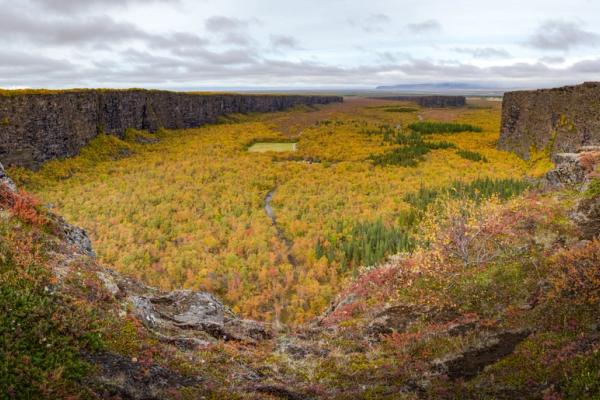
Day 2
Jökulsárgljúfur Canyon
Waking up early in Ásbyrgi, you’ll want to drive out of the canyon, turn left on Road 85, and then turn to the south along Road 862. This road takes you down the western side of Jökulsárgljúfur Canyon, and gives you access to the several stops along the Diamond Cirle route in Iceland.
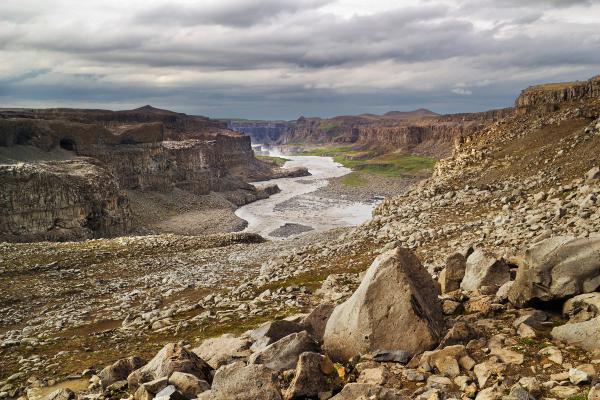
Hjlóðaklettur and Rauðhólar
The first stop along Road 862 heading south is at Hjlóðaklettur. This translates to ‘singing cliffs’ in English, referencing the fact that you can call out in these wacky formations of basalt cliffs and receive an echo back.
The singing cliffs are easy to access from the parking area, from which there are several trails to choose from. There’s also a 5km trail north that brings you to Rauðhólar, or the red hills. If you’ve got the energy, we strongly recommend visiting this amazing hill, scarred a bright red thanks to oxidation of iron in the lava.
Hólmatungur
Continuing along Road 862, after your stop at Hjlóðaklettur, you’ll come across another parking area for Hólmatungur. This is a lush area of islets, rivers, waterfalls, and a picturesque stop for a walk. There’s a 4.5km return trek that takes you to Hólmárfoss, well worth the stop.
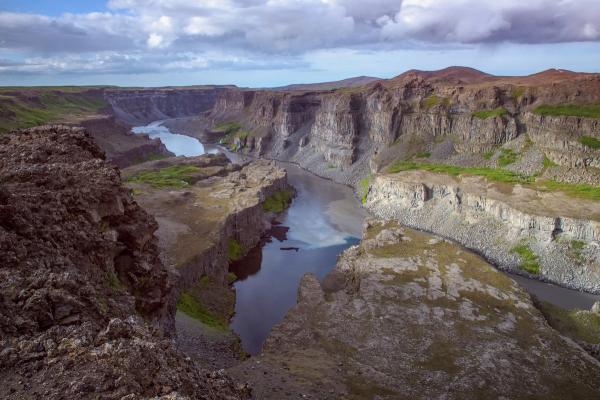
Dettifoss: Iceland’s Most Powerful Waterfall
As you continue on your self-drive itinerary of the Diamond Circle, you’ll finally reach the most popular attraction along this driving route in northeast Iceland: Dettifoss. This is the most powerful waterfall in the country, but it’s not the size or width that’s impressive. Instead, it’s the incredible amount of water that buckets over the side every second – about 200m³ on an average day.
There are plenty of different viewpoints to check out here, and a few paths also lead to more waterfalls north and south along the canyon. After you’ve had your fill, finish the drive south to join back up with the ring road to continue your camper trip in Iceland.

Extra Stops!
Lake Mývatn & Krafla
If you’re heading west along the ring road toward Akureyri, you’ll pass Lake Mývatn. This destination is where the black lava fields of the highlands give way to an oasis of mountains, volcanic craters, and a system of streams and lakes. The biggest of those lakes is, of course, Lake Mývatn, and there’s plenty to see and do around it.
You could easily spend a day exploring the shores of the lake in your camper and ducking off to the many sites around the edges. There’s the epic lava field of Dimmuborgir, you could scale the volcanic crater of Hverfjall, and even delve underground to visit the hot spring of Grjótagjá. Beyond the mountain pass to the east, there’s also the wild geothermal area of Hverir, and the volcanic system of Krafla where you’ll see steaming lava fields, a volcanic crater, and a geothermal plant powering the region.
It's this last area that also powers the popular Mývatn Nature Baths, the Blue Lagoon of the north. This is a wonderful geothermal hot spring to enjoy at the end of a long day exploring leaving you refreshed and recharged.

Goðafoss: Waterfall of the Gods
Between Mývatn and Akureyri is another stop you don’t want to miss: Goðafoss. The ‘waterfall of the Gods’ is a beauty for sure. In the middle of a flat, rocky landscape, the riverbanks of basalt suddenly open, allowing the water to shoot over the edge in a near-perfect semicircle.
The bright blue of the water clashes with the steely grey of the twisted basalt. It’s no wonder this is a favorite waterfall for many campers. Rumour has it that an Icelandic lawmaker threw his Pagan idols into the water after Iceland adopted Christianity in the year 1000, giving the waterfall its name.

Conclusion
Driving the Diamond Circle in a campervan is an incredible way to see North Iceland’s highlights. From whale watching in Húsavík to hiking in Ásbyrgi and standing before the power of Dettifoss, every stop is worth it. Summer is the easiest time to go, but parts of the route stay open year-round.
With a camper, you can take your time, explore at your own pace, and enjoy the freedom of the open road. Whether it’s soaking in hot springs or chasing waterfalls, this drive is one you won’t forget.

